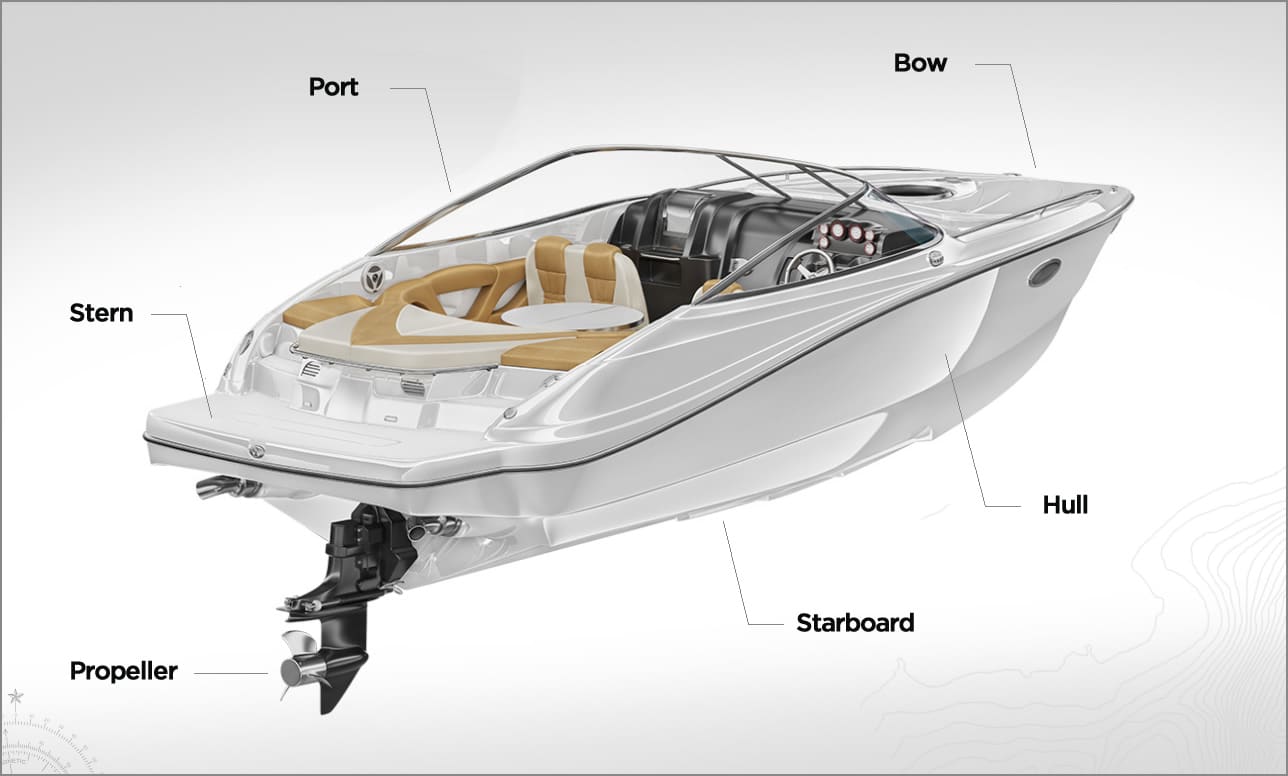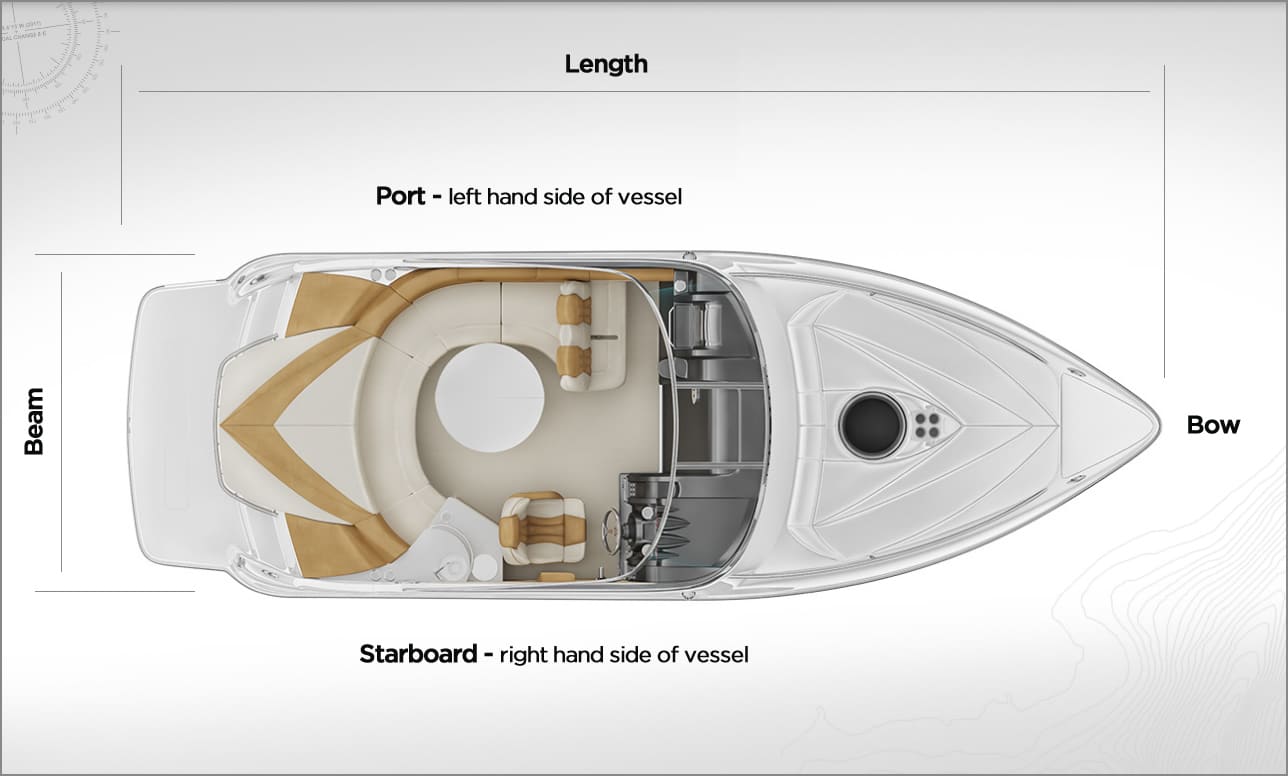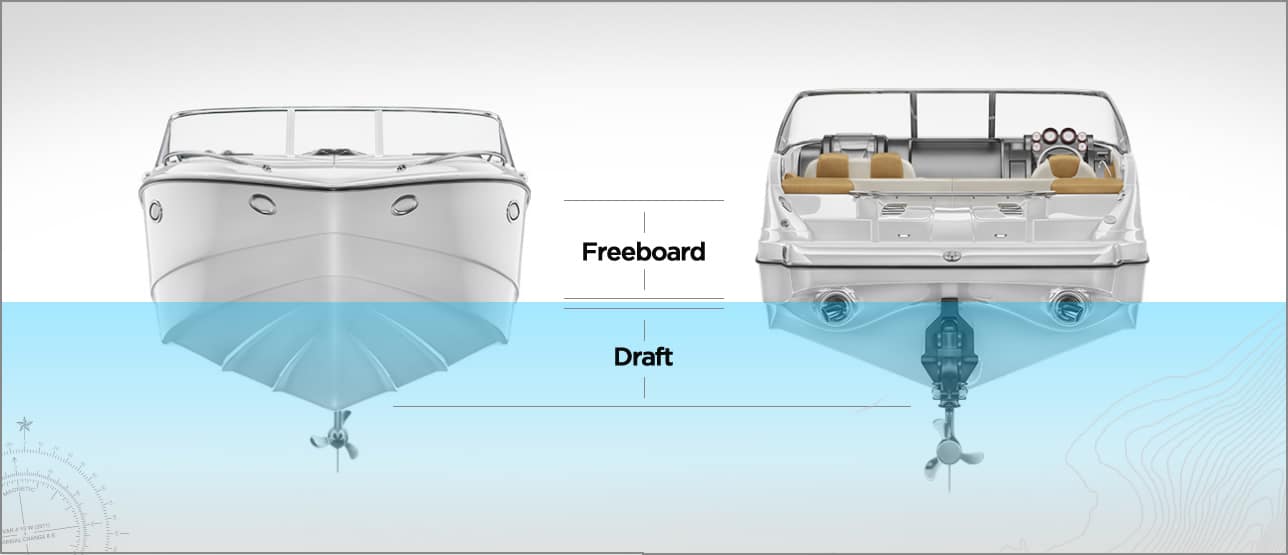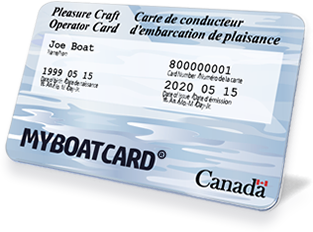Boat Terminology
It is important that all boat operators understand the terminology associated with the safe day-to-day operation of a vessel. This can save time in emergency situations and help avoid miscommunications.

BOW – the forward (front) part of a boat.
STERN – is the rear or back portion of a boat.
PORT – is the left-hand side of a vessel when looking forward. (Hint: Port and Left both have four letters).
STARBOARD – is the right-hand side of a vessel when looking forward.
DRAFT – is the depth of water that a vessel requires to float (and is approximated as the distance between the waterline and the lowest point of the hull).
WATERLINE – can be found on the hull of the vessel, and indicates the recommended maximum gross load capacity. The waterline must never be submerged. If it is submerged, the boat has exceeded its maximum load capacity.
HULL – is the body of a vessel, from the deck down. It does not include rigging, superstructure, or machinery.
FREEBOARD – is the distance between a vessel’s deck and the waterline.


PERSONAL FLOTATION DEVICE (PFD) – is a device designed to provide enough buoyancy to keep the wearer’s chin out of the water. It is not, however, a lifejacket, which is designed to turn an unconscious person face-up in the water.
LIFEJACKET – is a flotation device that, although bulky, provides much more buoyancy than a PFD and is designed to turn an unconscious person face-up in the water.
TO OPERATE – means the action of controlling the speed and course of a pleasure craft.
VESSEL – a term that refers to every description of watercraft, including non-displacement craft and seaplanes, used or capable of being used as a means of transportation on water.
PLEASURE CRAFT – is any type of watercraft that is used exclusively for pleasure and does not carry passengers or goods for hire, reward, remuneration, or any object of profit. If remuneration is earned for a service provided by a vessel, then that vessel is deemed to be a commercial vessel.
POWER DRIVEN VESSEL – is a watercraft that is propelled by any type of engine or machinery. A sailboat that is being propelled by its engine, even if it has its sails up, is deemed a power-driven vessel.
SAILING VESSEL – is any vessel under sail, provided that propelling machinery, if fitted, is not being used.
STAND ON VESSEL – is a vessel that has right-of-way, and when meeting, crossing the path of, or overtaking another vessel, shall maintain her course and speed.
GIVE WAY VESSEL – is a vessel that shall keep out of the way of another vessel.
RESTRICTED VISIBILITY – refers to any condition in which visibility is restricted by fog, mist, falling snow, heavy rainstorms, sandstorms or any other similar cause.
WAKE – is the waves (or track of water) around and behind the vessel that are created by a vessel in motion.
STRONG WIND WARNING – are winds with sustained wind speeds in the range of 20 – 33 knots (36 to 61 km/h) as defined by the Meteorological Service of Canada.

